No Trespassing Property of City of St. Louis
Last month I went down street after street, passing vacant lots where homes once stood, all owned by the City of St. Louis. It was depressing to think a once lively neighborhood has been erased, except for roads & sidewalks. You’re probably thinking I was somewhere in north St. Louis, but I was actually in St. Louis County. At one point I even crossed over I-270! Yes, because of the Lambert runway expansion the City of St. Louis owns hundreds of acres in the City of Bridgeton: the former Carrollton subdivision.
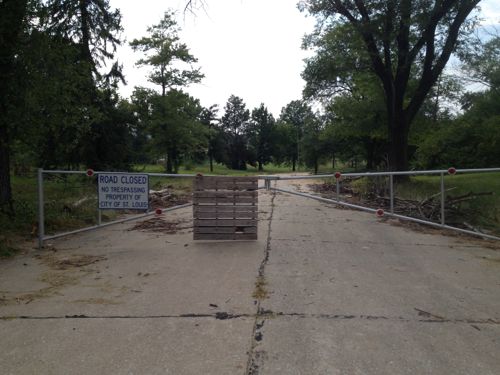
Click image for map.
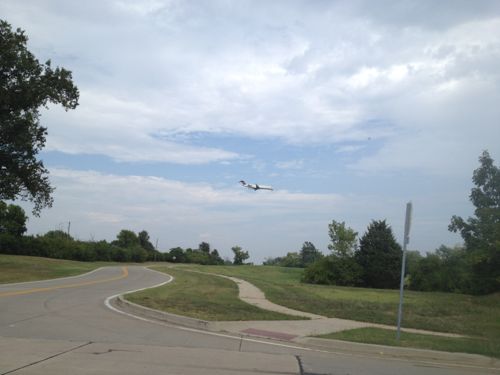
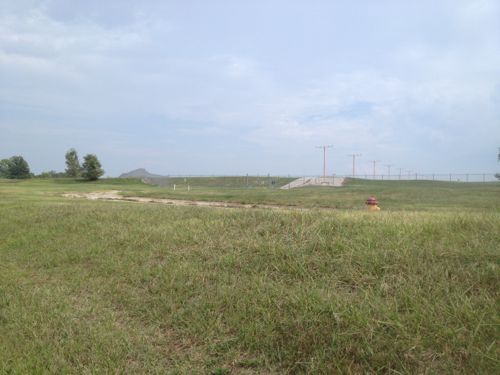
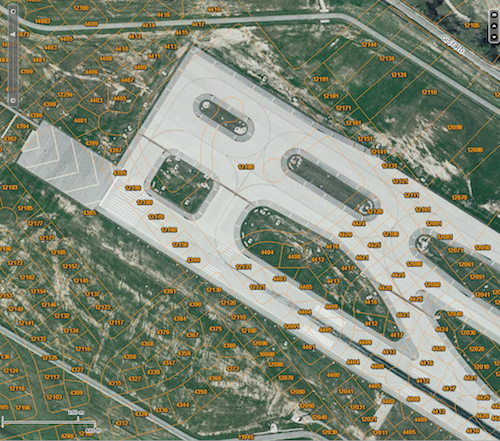
b
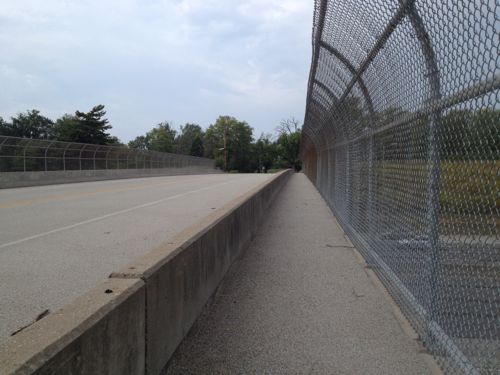
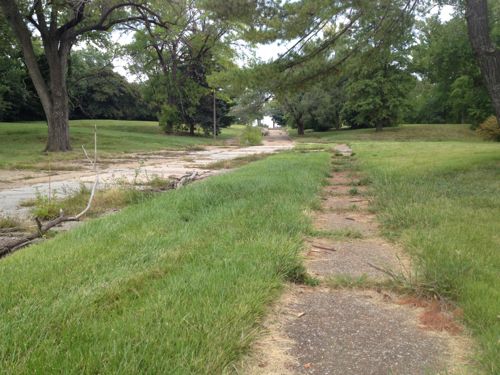
St. Louis is responsible for maintaing the properties, cutting acres of grass basically. Not only does St. Louis have too much property in St. Louis, they also have too much in Bridgeton!
The land can’t be used for residential purposes, but office/retail/industrial is apparently fine. The problem is St. Louis must repay the FAA if it sells the property, making it very costly to develop based on the amount the FAA paid.
And that runway? From a 2007 MIT-student analysis:
The need for runway 11-29 was actually delay-driven, not demand-driven. Although the levels of demand from the forecast never materialized, the new runway did provide the capability to perform dual independent IFR approaches at Lambert. Again, although the delay cost savings are less than initially projected, there are nonetheless savings that can be directly attributed to the new runway. Thus despite the over-optimistic demand forecast, the construction new runway does seem to have been justified.
With regard to flexible planning, the Lambert officials were indeed responsive to the lower actual passenger traffic than was originally projected. The terminal expansion plans were abandoned after the traffic collapse. Although it is still possible to implement the terminal expansion plans in the future, it would have been wasteful to do so once demand levels dropped. Thus, the part of the Lambert expansion project that was demand-driven was indeed responsive to the drop in demand.
The new runway was probably cheaper to build when it was than it would have been in the future. It is likely that property acquisition costs as well as construction costs would have increased, and so delaying the runway construction would probably have cost more than proceeding as scheduled. Once traffic returns to St. Louis, runway 11-29 will be an invaluable asset. In fact, it may even provide the competitive advantage needed to draw traffic to Lambert. Thus, it seems that despite the strong-armed actions and swift construction in the face of the dramatic downturn in passenger traffic, the new runway at Lambert- St. Louis International Airport was in fact beneficial.
The runway is built and not going anywhere. Now we just need to figure out what to do to remove hundreds of acres from St. Louis ownership, so that it can again produce tax revenue for St. Louis County & the City of Bridgeton.
— Steve Patterson
b
b
Looks like the perfect location for a new landfill.
From the MIT article: ” FAA requirements state that no part of an airfield should be closer than 10,000 ft to a landfill,”
Why in the world would that matter? There are hundreds of graves on the approach to Lambert, right next to the runway. But no landfill within two miles of a runway? Who cares?
Oh, I get it. Bird strikes.
Zombies aren’t the same issue . . . . 😉
I guess I’m confused. How do we “remove hundreds of acres from St. Louis ownership”? The short answer is to either sell it to a developer or to give it away/transfer ownership to another government entity. Apparently, the long answer is that it is currently worth far less than we paid to acquire it, so we would have to spend tax dollars to repay the FAA if we take a loss on any sale. If that’s the case, I guess it makes sense to just sit on it and hope for the market to (magically?) improve in the future, much like way the the LRA does in the city (heavy sarcasm).
This land was acquired to create a noise buffer around the new runway. It’s something the FAA requires because of the cost of mitigating noise complaints with existing runways. It’s also why new airports in the US (DFW, MCO, DEN) are surrounded by acres of empty land. Yes, the land “can” be (re)developed, in theory, for non-residential uses, but like every thing else in real estate, it’s dependent on both location and demand. Not far away, there are already acres of vacant commercial land sitting on the market, starting with the the site of the old Ford plant on Lindbergh. We need to weigh the cost of passive maintenance versus the cost of selling. If it costs us $200-$300 an acre, annually, to keep the grass cut, and it would cost us $50,000 – $100,000 an acre (or more) to reimburse the FAA, if we sold, the answer is, unfortunately, pretty clear
You left out an option, get the FAA to agree to 10-15¢ on the dollar. I’ve also heard, but I’m still researching, the FAA is now reducing the size of the buffer zone required around airports. Some of this land may be useable again for residential.
Usable for residential but not a landfill? Hmmm.
Yes, anything is possible. But what’s your point, what’s the bigger picture? North County is suffering right now, many areas are stagnant, struggling or declining. Why would anyone want to invest in land under an active flight path when they can invest more easily a mile or two away? This is one case where “make it a park” actually makes a whole lot of sense. The city owns it, there’s demand for open space, especially ball fields, and they would be an ideal use for the area.
There’s huge interest in this land because of I-270 frontage!
Yes, there is exposure, but there is also limited access to the highway, itself – the nearest interchanges are at St Charles Rock Road (to the west) and at Missouri Bottom Road (to the east). But I’m still confused – selling off this land to a developer will just yield more suburban sprawl, not anything like New Town, much less anything that comes close to a walkable, truly-urban neighborhood. The only upside is returning the land to the tax rolls; the downside is that the only market in this part of the county is for low-scale, auto-centric, sprawling development. If your goal is to create an urban area with greater densities, what would be gained in enabling more suburban sprawl?!
A new interchange is being discussed! No, I don’t want more suburban sprawl. I’m interested in seeing some of this land used for food production, for example.My point is awareness, to make city & county residents aware of this large area, BTW, developers are trying to buy out a fully occupied subdivision just 5 minutes south on I-270 to build big-box retail.
Bridgeton is not Creve Coeur. The demographics along the Olive / Page corridor are superior to those found along the St Charles Rock / Natural Bridge / 370 corridor. And this is not a “large” area. Are there “possibilities”? Sure there are – I just wouldn’t count on making much of an impact on the overall airport budget.
Do you have any data to substantiate this claim of superior demographics? BTW, the subdivision being looked at by big box developers is in inincorporated St. Louis County, not Creve Coeur.
Nothing other than home prices and the availability (or lack thereof) of large real estate parcels . . . . I-270 east and north of I-70 is a much different market / environment / demographic than I-270 west and south of I-70.
Different how?
I don’t see any data to substantiate the claim of “huge interest” in development of interchange improvements, either.
Fair enough, “huge” is an exaggeration.
Better there than Wentzville.
making it a park makes too much sense, and therefore
it wont be done. How about also community gardens,
cornfields, commercial flower growing, et etc
” Once traffic returns to St. Louis, runway 11-29 will be an invaluable asset.”
Not sure I agree. Why should traffic ever return to St Louis? The whole idea of airline hubs may be in decline ( http://blog.rmi.org/blog_Getting_to_the_Point ), and in any case, STL is much smaller than Chicago or Dallas and thus less desirable as a Midwest hub. In fact St Louis was only TWA’s hub for about 20 years – before then the hub was Kansas City. As for flight in general, rising fuel costs will prevent air travel from growing at the same rate as the economy, and HSR will likely take the place of regional flights like STL-ORD.
“Thus despite the over-optimistic demand forecast, the construction new runway does seem to have been justified.”
I would like to see a numerical analysis of this claim. The article is also missing references for its numerous claims. So while it’s an interesting read, it’s not exactly something that can be relied on. In short it’s about what should be expected from MIT on one hand, and a student on the other hand.
What is the percentage of flights that use this new runway? I believe that as of five(?) years ago, only 10% of flights used it. Has that changed for the better or worse?
The new runway is used mostly by airlines on the A concourse – Delta and United. With a western configuration, the new runway is used for departures. With an eastern configuration, the new runway is used for landings. In these situations, it saves 3-5 minutes per operation required to taxi to / from the eastern end of the existing runways.